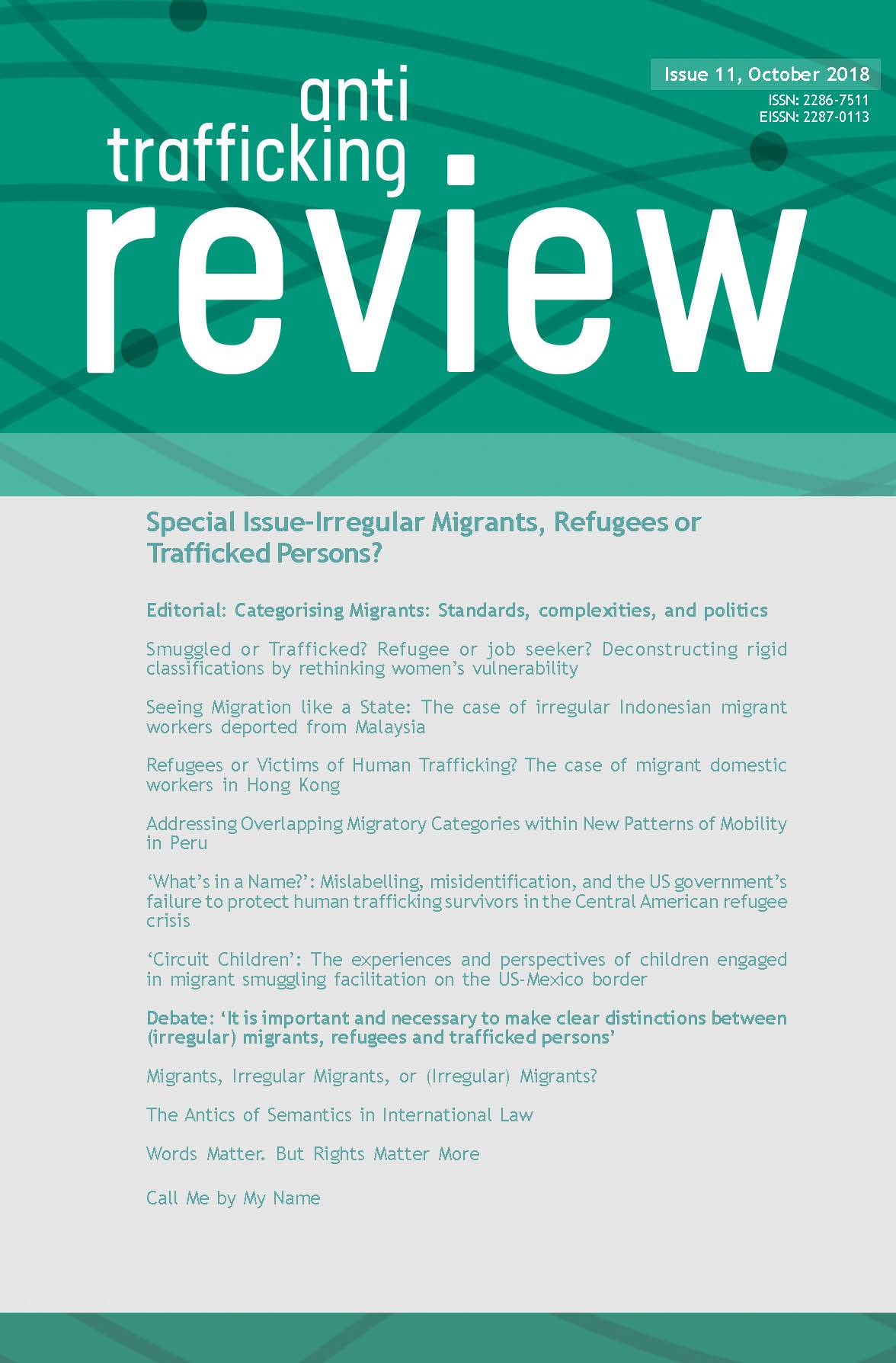Categorising Migrants: Standards, complexities, and politics
 Launch of Issue 11 of Anti-Trafficking Review ‘Irregular Migrants, Refugees or Trafficked Persons?’
Launch of Issue 11 of Anti-Trafficking Review ‘Irregular Migrants, Refugees or Trafficked Persons?’
Guest Editors: Claus K. Meyer and Sebastian Boll
Editor: Borislav Gerasimov
International migration has become a ‘mega trend’ of our times, with more than 260 million migrants living outside their country of origin in 2017. Some people move in search of better livelihood opportunities, others flee conflict, environmental degradation or natural disasters, and yet others are deceived or coerced into exploitative work. At the same time, the categories developed by the international community for people on the move—such as smuggled migrants, refugees, or trafficked persons—are increasingly inadequate to capture today’s complex migration flows. Yet the label that a person is given by authorities can mean the difference between assistance and protection, or arrest and deportation.
This special issue of the Anti-Trafficking Review examines migratory categories, their use among authorities and humanitarian actors, and—most importantly—the impact they have on migrants themselves. First, Giorgia Serughetti uses the concepts of ‘agency’ and ‘vulnerability’ to discuss the role of gendered and racialised stereotyping in determining labels and treatment in the case of Nigerian women asylum-seekers in Italy. Drawing on feminist political philosophy and philosophy of law, Serughetti calls for a refocus of attention from people’s motives for moving to their protection needs. The next four papers—by Benny Juliawan, Jade Anderson and Annie Li, Cécile Blouin and Emily Button, and Katherine Soltis and Rebecca Walters—scrutinise different labels applied to migrants, such as irregular migrants, refugees, smuggled migrants, and victims of trafficking, and their potential overlaps, in Malaysia/Indonesia, Hong Kong SAR, Peru and the United States, respectively. A common theme in these papers is the inability, or unwillingness, of states to provide human rights protections to non-citizens on their territories. In some of these locations, no label grants any meaningful protection and assistance; in others, authorities tend to apply the one offering the least protection. A common theme throughout these papers is thes need to listen to migrants’ stories and examine their individual situations with greater attention. In the final thematic article, Gabriella Sanchez draws on the perspectives of children engaged in migrant smuggling facilitation across the US-Mexico border to call for a more nuanced understanding of their experiences as embedded in socio-political inequalities on both sides of the border. She concludes that narratives portraying young people exclusively as victims of criminals risk reinforcing security-oriented responses such as migration control, which in turn increase children’s socio-economic vulnerabilities.
In the debate section, four authors—Katharine Weatherhead, Marika McAdam, Pia Oberoi and Sarah Elliott—discuss the statement ‘It is important and necessary to make clear distinctions between (irregular) migrants, refugees and trafficked persons’. Agreeing with it to different degrees, they collectively emphasise the need to uphold human rights protections for all people on the move, regardless of their particular conditions and motivations for migrating.
Ultimately, the contributions to this Special Issue show that policy responses to migrants must rise to the challenges posed by today’s patterns of migration, resisting temptations of reductionist or static categorisations. Rights—especially human rights—must be put up front in this endeavour.
View the new issue here

